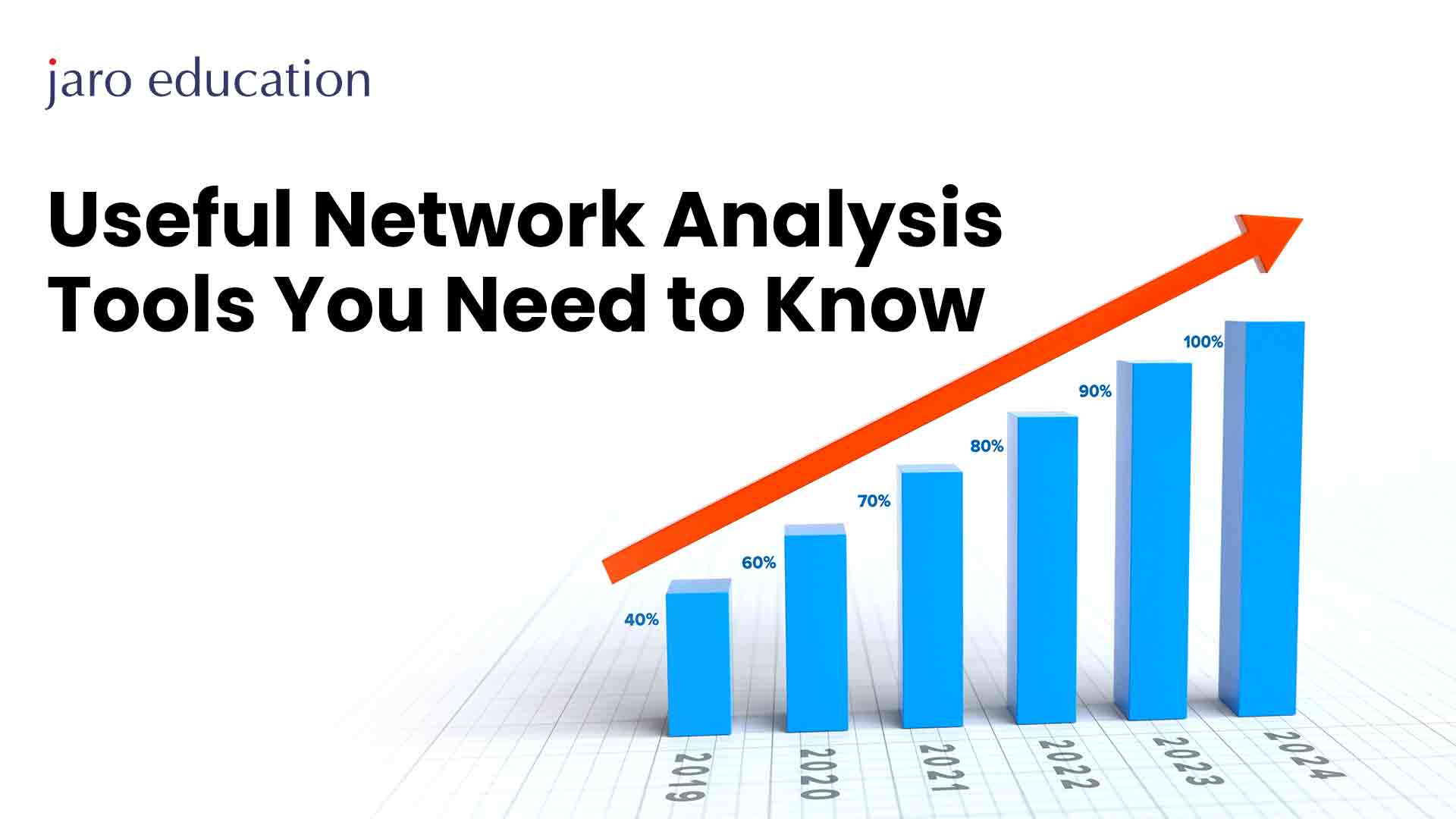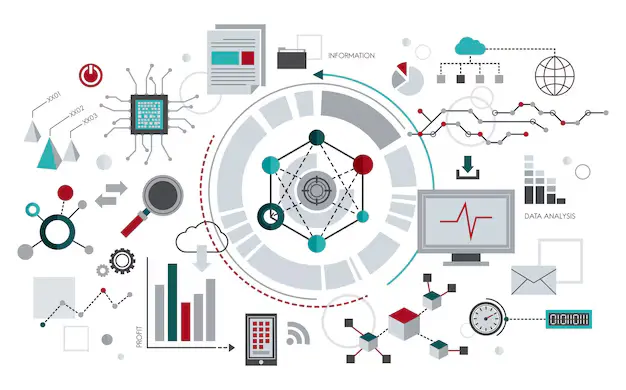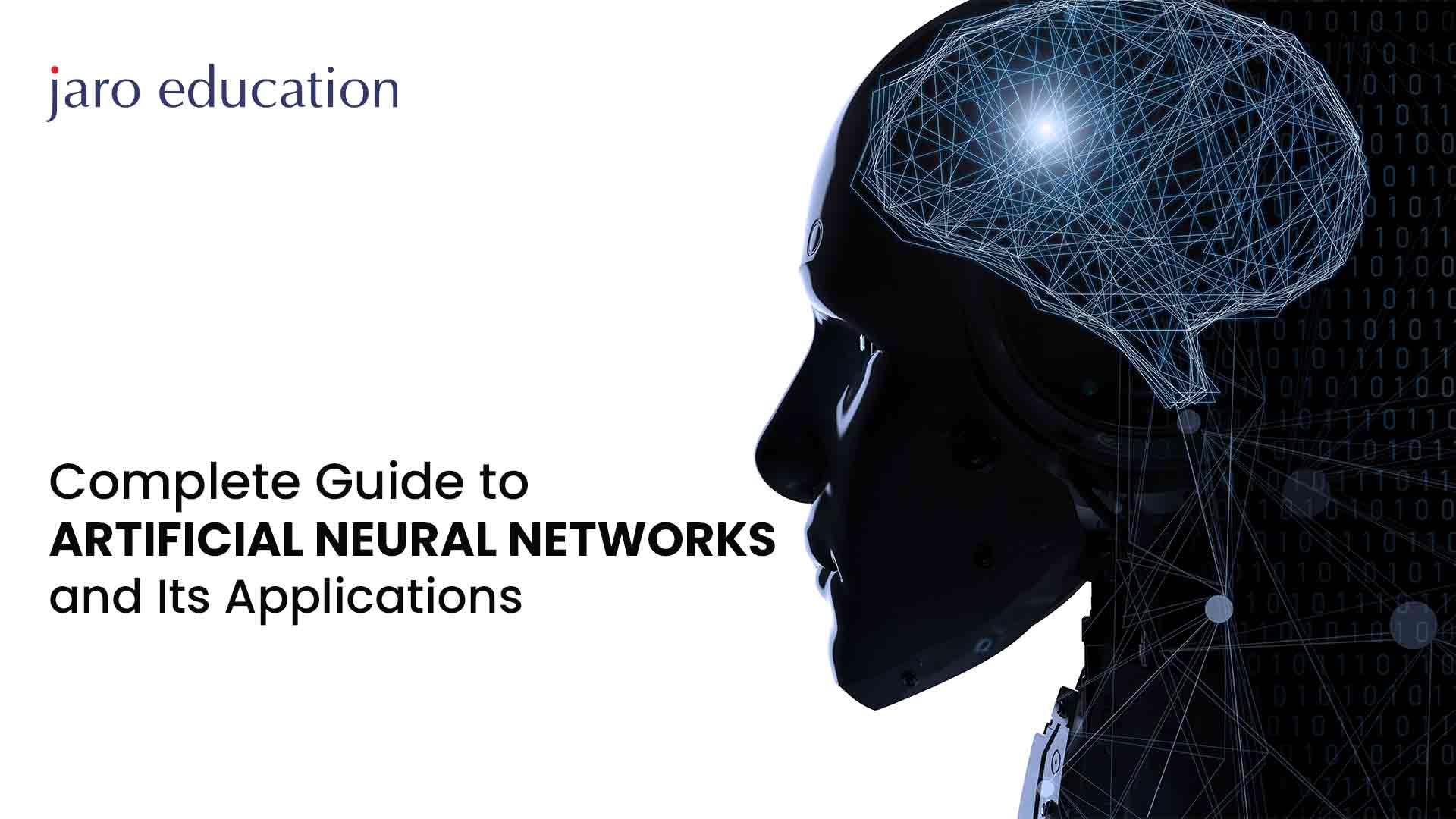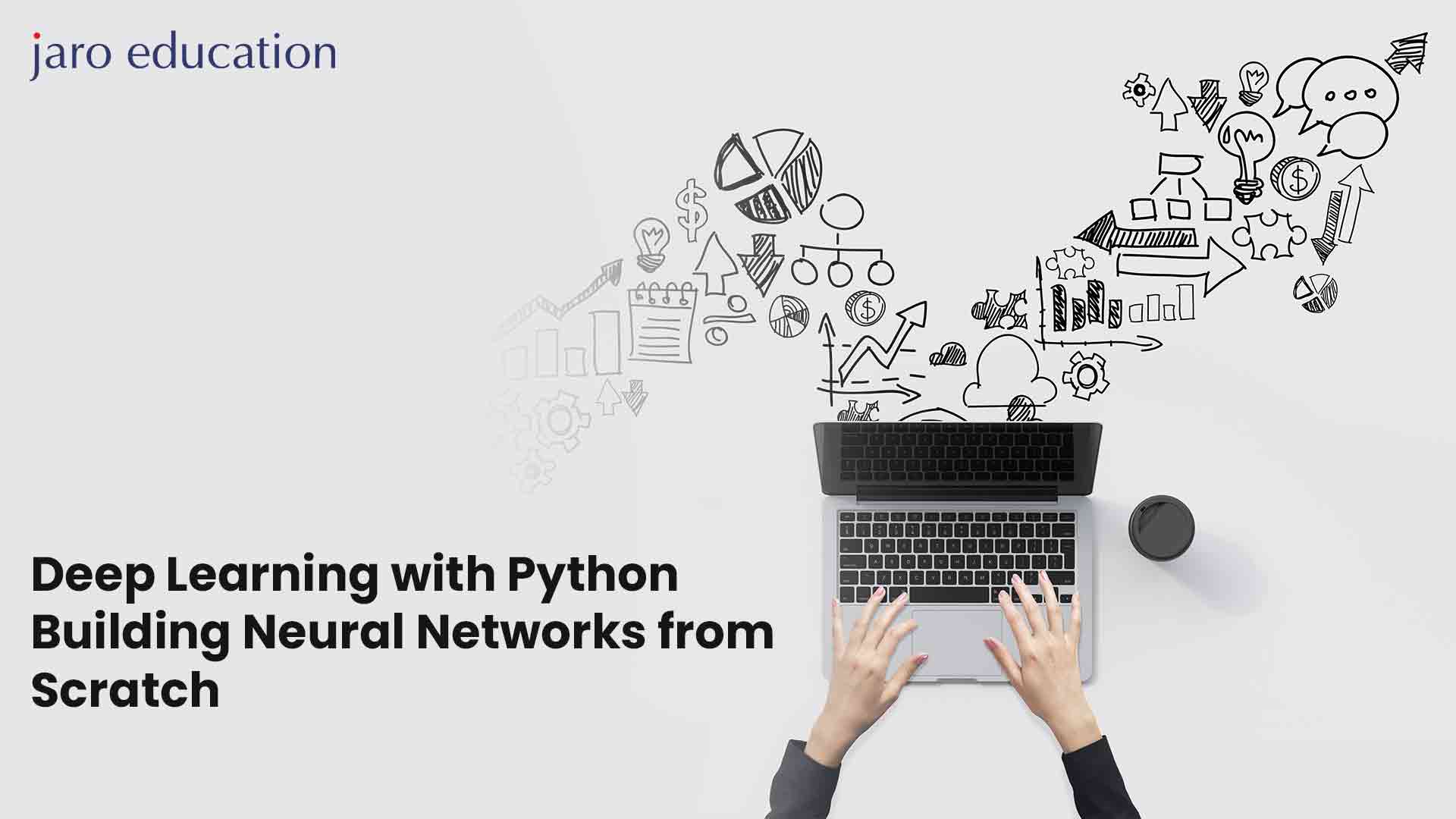Useful Network Analysis Tools You Need to Know
Table of Contents

- jaro education
- 13, August 2024
- 9:00 am
Introduction
In this data-driven world, learning about these intricate webs of relationships and interactions within networks becomes paramount. Whether harnessing information from social media analytics to connect various people, optimize routes, or even manage communication networks, it provides relevant insight into the working. In this blog, the author presents some core concepts of network analysis, the objectives and benefits, and some of the basic tools used in this discipline. By the end, you’ll have a proper baseline of knowledge in network analysis that shall form a very valuable addition to your skill set, given that you are enrolled in the Post Graduate Certificate Programme in Applied Data Science & AI offered by CEC, IIT Roorkee.
What is Network Analysis?
Analysis of networks is one of the methodologies to probe into the structures of complex networks. These could be anything from social networks to biological systems or transportation grids. The very essence of the network analysis method is to look at the relationships and flows between entities. More commonly known as nodes and edges under graph theory, wherein it deals with the very essence—entities and the relationships or interactions among them.

Objectives of Network Analysis
There are several objectives of network analysis kept in view while using analytics for networks. The major objectives are given below:
- Identification of Key Nodes and Connections: The primary objective is to identify the most influential nodes in any network. These key nodes may predominantly affect the working and behaviour of the network.
- Network Structure Analysis: A method of understanding the general structure and topology of the network. It deals with the relations amongst the nodes and patterns emanating from these links.
- Network Performance Optimization: It provides a network analysis, identifying bottlenecks and inefficiencies that mar performance and allows optimization and performance improvement.
- Predict Network Behaviour: One can use the knowledge of past and current behaviours in a network to predict trends and behaviour in the future, which is helpful in application domains like epidemiology and marketing.
- Enhance Network Security: In cyber security, analysis of the network will provide information about vulnerabilities within the network and potential points of attack hence more easily secure the network.
Benefits of Network Analysis
The benefits of network analysis cut across many industries and the gains are enormous:
- Enhanced Decision-Making: This will be able to provide better insight for the decision-makers from the visualization of the complex networks; thus, the decision-making process should be well-informed.
- Better Communication and Collaboration: Analysis of networks helps in determining the flow of information within an organization and can help in improving communication and collaboration.
- Resource Optimization: Critical nodes and connections are located using this. It will ensure that resources are efficiently used to repair or improve the performance of the network.
- Fraud and Anomaly Detection: Vulnerability network analysis is applicable in financial and cybersecurity fields to detect frauds and anomalies.
- Understand Social Dynamics: To understand social dynamics, community structures, or the paths that information diffusion or diseases may follow, social analytics for networks is used.
Network Analysis Tools
There are many strong network analysis tools, all with different powers and functionalities. Here are some of the most common:
- Gephi: Gephi is a well-known open-source software for network visualization and analysis, also noted for its ease of use and good capability for visualization. It is widely used in the social analysis of networks and network visualization of big networks.
- Cytoscape: It is highly extendable because work on Cytoscape began with it as a biological research tool and later adapted to other kinds of network analysis. There are hundreds of plugins available for doing many specific tasks.
- Pajek: Pajek follows the analysis and visualization of very large networks. It offers many different algorithms for network analysis and visualization purposes.
- NetworkX: NetworkX is an easy-to-use Python package used for the creation, manipulation, and study of the structure, dynamics, and functions of complex networks. It interfaces fairly easily with other scientific computing libraries for Python.
- UCINET: UCINET is a social network analysis package. It is a comprehensive toolset provided with all the ordinary analytic and visualization tools.
- Neo4j: This is a graph database that handles data storage and great queries on large networks. It finds great relevance in applications that demand real-time connected data analysis.
Practical Applications of Network Analysis
The power of analysis of networks comes into practical application in a variety of utility-based activities during day-to-day life. Here are a few practical applications:
- Social Network Analysis: Understanding the relationships and influence patterns within social networks can help in inferring marketing strategies, political campaigns, and community structures.
- Transportation Networks: This helps in optimizing routes, decongestion, and general efficiency with transportation.
- Biological Networks: Within the domain of bioinformatics, analysis of networks is applied to understand protein-protein interaction, metabolic pathways, and gene regulatory networks.
- Communication Networks: Analysis of networks allows for the optimization of communication networks in performance and security, through the study of the architecture.
- Financial Networks: Analysis of networks in finance gives insight into the complex connections among financial agents, showing what a financial system breakage risk is and detecting frauds.
Getting Started with Network Analysis
A dive into the world of analysis of networks can be a daunting task if not approached with appropriate segmentation. Here is a simple start-up guide:
- Basic Understanding: The well-known and never-to-be-forgotten concepts in the world of network analytics are nodes, edges, and common metrics like degree, centrality, and clustering coefficient.
- Choose the Right Tools: Choose a network analytic tool that fits your requirements based on your needs. Gephi and NetworkX can be friendly to beginners.
- Collect Data: Scrape data relevant to your network. This can be social media data, transportation logs, and biological datasets.
- Visualize the network: A network portrayal should be visualized with the selected tool. Visualization will help you gain insight into the network structure and recognize key nodes and connections.
- Analyze the Network: Diverse analyses shall be done on the network to extract insights. Analyses should vary from computing centrality measures to detecting communities or modelling network dynamics.
- Interpret the Results: Formulate your conclusions to describe exactly how insights are applied in solving real-world problems or optimizing performance.

Advanced Topics in Network Analysis
When you’ve got the gist of the basics, you may be interested in some coverage of a bit more advanced topics in network analysis. Here are some areas that you might want to pursue:
- Dynamic Analysis of Networks: In contrast to static networks, dynamic networks change over time. The analysis of this type of network is learning about how the structure and properties come up.
- Multilayer Networks: They are networks that have more than one layer; each represents some kind of different interaction or relationship. This can be used to provide a much more detailed explanation of complex systems with multilayer analysis of networks.
- Network Embedding: It is a technique to embed nodes in a network in low-dimensional space while preserving its structural properties. This is useful for machine learning applications. A study of how networks respond to attack or failure can lead to the design of much more robust and resilient systems.
- Community Detection: The identification of clusters or communities may show that there are hidden structures and relationships within a network that are not easily observable.
Conclusion
Network analysis is an incredibly strong instrument that uncovers hidden patterns and optimizes performance within complex understanding across different domains. The applications of analysis of networks range from social networks to biological systems. Understanding the concepts, objectives, advantages, and tools can help us unlock valuable insights and power innovation in the field.












